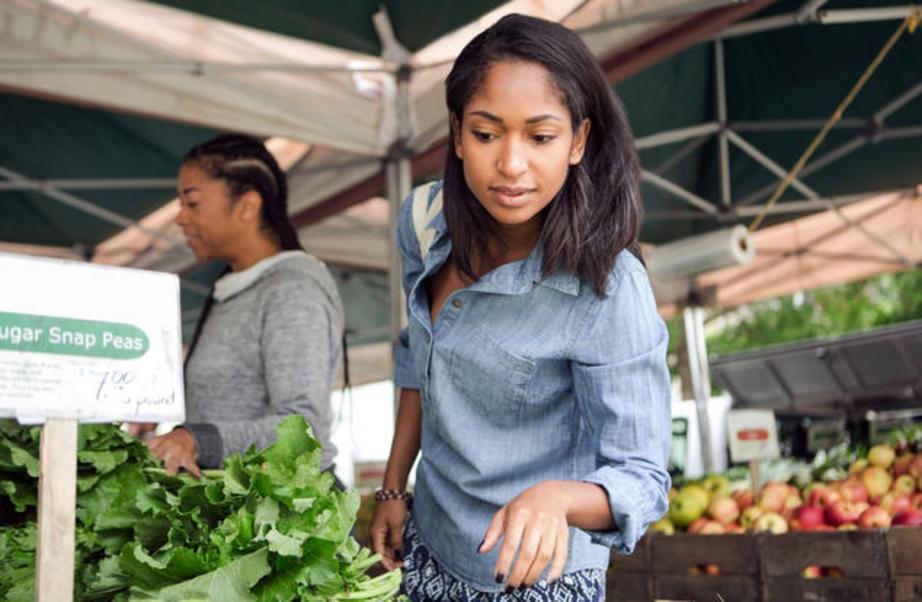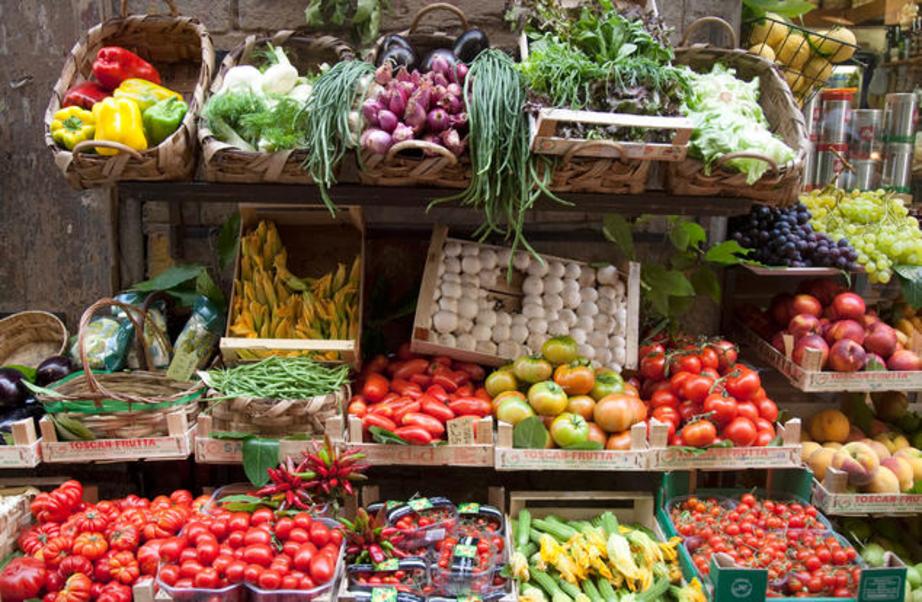Ask these five questions before buying produce
To make sure that that kale is good for you and the environment, you should really get to know it better.
1. Am I eating enough fruits and vegetables?
According to the Centers for Disease Control and Prevention, only one in ten Americans are eating enough fruits and vegetables, which can lower your risk of serious diseases like heart disease, stroke, high blood pressure, diabetes, and some cancers. Not to mention, eating less animal products—particularly red meat and dairy—is also a powerful way to reduce the environmental impact of your diet. NRDC estimates that the process of producing beef, for example, is about 34 times more greenhouse gas–intensive than producing lentils.
2. Is it organic?
Industrial farms that produce most of America’s crops use massive amounts of chemical pesticides and fertilizers. Not only have pesticides been linked to an increased risk of cancer and reproductive issues in humans, but they also kill wildlife like bees and butterflies. Choosing organic produce is one way to reduce these harmful chemicals. Foods labeled "organic" must be largely free of synthetic pesticides and fertilizers. But many other claims, such as "all natural" or "eco-friendly," don't mean a thing. When in doubt, check Consumer Reports' Eco-labels Center. And if you’re on a budget—since most organic foods come with a bigger price tag—make smart buying choices by using the Environmental Working Group’s guide to the most pesticide-heavy fruits and vegetables.
3. Does it look good—a little too good?
Good looks don’t always mean good taste. Most of the produce in grocery stores has been bred to look a certain way—but a perfect shape or color is no guarantee of freshness or flavor. A spotted apple, a crooked carrot, or an ungainly tomato is likely just as delicious as—or even tastier than—a perfect-looking specimen.
Some stores are starting to sell less-than-perfect produce, often at a discount. Don't be afraid of these. (NRDC's onEarth explains why.) Buy ugly, and you could be rewarded with food that tastes better and may have been grown with more care for the environment.

4. Are you really gonna eat all that?
Americans waste a staggering amount of food: Up to 40 percent of what we produce in this country goes uneaten. Even the most sustainably grown produce in the world doesn't do anyone any good it if ends up in a landfill. Food production, packaging, and transportation account for 15 percent of the energy, 50 percent of the land, and 80 percent of the freshwater consumed in America. When we waste food, we waste all those resources—and money to boot.
So take a quick inventory of your fridge and cupboards before you shop. Create a plan. When buying fresh food, shop only for what you need for the week. Don't be afraid to cut the bruise out of an apple and eat the rest, or use up leftovers to make a soup or stir-fry. Simple strategies like this can cut household food waste by as much as 25 percent.
5. Is it local?
Unlike the single-crop system of our vast industrial farms, having numerous smaller, local farms increases agricultural and ecological diversity—which is good news for wildlife, food security, and people who appreciate variety in their food supply. Supporting regional farmers helps preserve open space and keep food dollars within our communities. Produce that travels long distances by air, such as perishable, out-of-season berries from South America, are associated with much greater greenhouse gas emissions than locally produced foods or food that arrives by land and sea.

